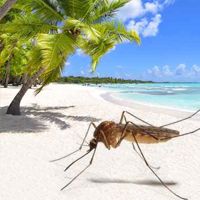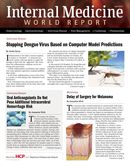Stopping Dengue Virus Based on Computer Model Predictions
Researchers hope to combat dengue virus transmission by using a computer model to track how the Wolbachia bacterium can prevent the spread of the disease in mosquitoes.

A computer model predicted how effective a method of blocking dengue transmissions might be in different scenarios, according to research published in Science Translational Medicine.
Dengue is a mosquito borne virus in the tropics and subtropics that infects nearly 400 million people every year. It causes flu like symptoms, such as headache and joint pain. Wolbachia has been studied in the past in the hopes that, once embedded in the mosquitoes, can pass genetically to the next generations of mosquitoes to wipe out the disease. Wolbachia already naturally are present in nearly two thirds of mosquitoes, and the Aedes aegypti (A. aegypti) are especially resistant to Walbachia.
Researchers from all over the world collaborated to mimic field conditions by inserting the Wolbachia bacterium in mosquitoes in an attempt to block dengue transmissions. Both Wolbachia infected and uninfected mosquitoes were permitted to feed on the blood of Vietnamese dengue patients in order to measure how efficiently the bacterium blocked the dengue virus infection of the mosquito body and saliva — the 2 factors, which contribute to the spread of the infection among humans.
A computer-based model of the dengue virus transmission was then developed, and the researchers primed it with the results of the experiment. The researchers believed the model would be able to predict how well Wolbachia would diminish the rate of dengue transmission in the different scenarios.
“We found that Wolbachia could eliminate dengue transmission in locations where the intensity of transmission is low or moderate. In high transmission settings, Wolbachia would also cause a significant reduction in transmission,” senior author Cameron Simmons explained to Medical News Today. “Our results will enable policy makers in dengue affected countries to make informed decisions on Wolbachia when allocating scarce resources to dengue control.”
Simmons added that any dengue outbreaks in the future should be less severe in communities where Wolbachia has already been introduced (Cairns and Townsville, in Queensland). For example, during Australia’s “wet season” of 2008-2009, both Cairns and Townsville saw the worst dengue epidemic in more than 50 years — something the researchers believed their findings could combat.
